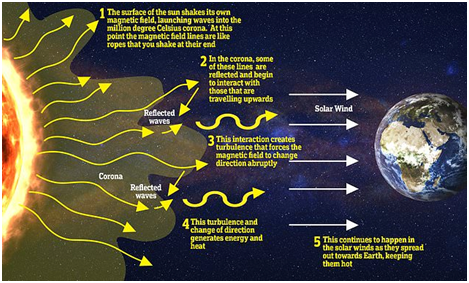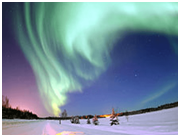

22nd March 2022 (6 Topics)
Context
Eugene Parker, a physicist who theorized the existence of solar wind and became the first person to witness the launch of a spacecraft bearing his name, has died recently.
About
About Physicist Eugene Parker:
- He is hailed as a visionary in his field of heliophysics, focused on the study of the sun and other stars.
- He is best known for his 1958 theory of the existence of solar wind — a supersonic flow of particles off the sun's surface.
- He was vindicated in 1962 when a NASA spacecraft mission to Venus (NASA's Mariner 2 spacecraft) confirmed his theory and solar wind's effect on the solar system, including occasional disruptions of communications systems on Earth.
- NASA honoured Mr. Parker's scientific contributions in 2018 by naming a spacecraft after him that was destined to travel straight into the sun's crown.
- Thus, he became the first person to witness the launch of a spacecraft bearing his name, NASA's Parker Solar Probe.
About Solar wind:
- The surface of the sun is blisteringly hot at 6,000 degrees Fahrenheit—but its atmosphere, called the corona, is more than a thousand times hotter.
- The corona is so hot that the sun’s gravity can’t hold it, so particles are flung off into space and travel throughout the solar system in every direction.
- As the sun spins, burns and burps, it creates complex swirls and eddies of particles.
- These particles, mostly protons and electrons, are traveling about a million miles per hour as they pass Earth.
- This flow of particles, called the “solar wind”.

Effects of solar wind – Aurora
- An aurora is a natural light display in the sky, predominantly seen in the high latitude (Arctic and Antarctic) regions. (This is due to magnetic field lines of earth and solar wind)
- Auroras are caused by charged particles, mainly electrons and protons, entering the atmosphere from above causing ionisation and excitation of atmospheric constituents, and consequent optical emissions.

Impact on Earth:
Solar wind has an enormous impact on our lives.
- The solar wind magnetically blankets the solar system, protecting life on Earth from even higher-energy particles coming from elsewhere in the galaxy.
- But the effects of storms on the sun’s surface can also affect our telecommunications networks.
- The wind would also pose a threat to astronauts traveling through space.
About NASA’s Parker Solar Probe:
- NASA’s Parker Solar Probe is the first-ever mission to "touch" the Sun.
- In order to unlock the mysteries of the Sun's atmosphere, Parker Solar Probe uses Venus’ gravity during seven flybys over nearly seven years to gradually bring its orbit closer to the Sun.
- The spacecraft will fly through the Sun’s atmosphere as close as 3.8 million miles to our star’s surface, well within the orbit of Mercury and more than seven times closer than any spacecraft has come before. (Earth’s average distance to the Sun is 93 million miles.)
- Flying into the outermost part of the Sun's atmosphere, known as the corona, for the first time, Parker Solar Probe employs a combination of in situ measurements and imaging to revolutionize our understanding of the corona and expand our knowledge of the origin and evolution of the solar wind.
- It also makes critical contributions to our ability to forecast changes in Earth's space environment that affect life and technology on Earth.
- Parker Solar Probe has three detailed science objectives:
- Trace the flow of energy that heats and accelerates the solar corona and solar wind.
- Determine the structure and dynamics of the plasma and magnetic fields at the sources of the solar wind.
- Explore mechanisms that accelerate and transport energetic particles.

